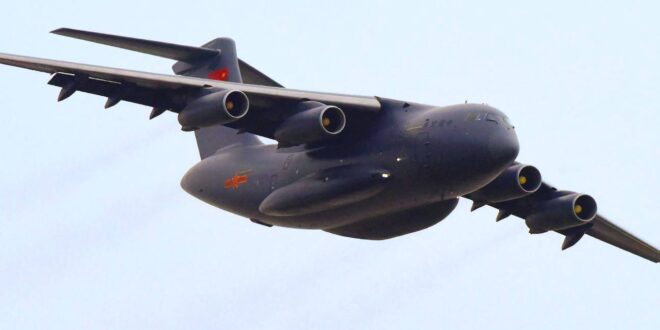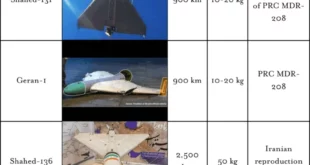China is leveraging its military training exercises with African forces to advance China’s expeditionary capabilities and geostrategic ambitions.
China’s 2-week military exercises with Tanzania and Mozambique in July and August 2024 marked a significant expansion of People’s Liberation Army (PLA) engagement in Africa. The battalion-sized Chinese deployment (approximately 1,000 troops) conducted land- and sea-based training involving maritime patrols, search and rescue, and live-fire drills with their Tanzanian and Mozambican counterparts in exercises labelled “Peace Unity-2024.” Some two dozen different types of weapons and equipment, including small arms, heavy artillery, micro unmanned aerial vehicles, and various reconnaissance and infantry vehicles were involved.
PLA ground, naval, air, and marine forces participated. Troops and armaments from the PLA Joint Logistics Support Force, created to streamline the PLA’s expeditionary capacity, were featured for the first time as was the PLA’s Information Support Force.
Chinese troops were transported from mainland China in a variety of transportation vehicles, including navy and air force strategic lift assets like the Y-20 strategic transport aircraft and Yuzhao-class amphibious landing docks.
Peace Unity-2024 underscored Africa’s significance as a proving ground for PLA power projection, readiness, and warfighting capabilities.This was a first. In previous drills, PLA deployments were from its base in Djibouti or antipiracy patrols. The PLA exercise in Belarus prior to Peace Unity-2024 featured the same strategic air and sealift capabilities but the Tanzania drills represented a much longer deployment distance.
The sea phase entailed maneuvers off the Mozambican coast. The land phase was held at the Chinese-built Comprehensive Training Center in Mapinga, Tanzania. The overall exercise included unscripted opposing force elements, combined arms maneuvers, and amphibious shore landings.
Peace Unity-2024 displayed the PLA’s improving ability to project infantry, armor, artillery, and support units across vast distances. It also underscored Africa’s significance as a proving ground for PLA power projection, readiness, and warfighting capabilities.
PLA Military Strategy in Africa Part of China’s Geostrategic Vision
China’s “Go Out” strategy (zouchuqu zhanlue, 走出去战略) and “New Historic Missions” guidance (xin de li shi shi ming, 新的历史使命) have driven many changes in the PLA’s doctrine and subsequent modernization. Enacted as a national strategy in 2000, Go Out, sometimes referred to as Go Global, is a Chinese state initiative to provide backing to state-owned enterprises (SOE) to relocate abroad and secure new markets and resources. It laid the foundation for Chinese-led initiatives like the Forum for China-Africa Cooperation (FOCAC), also created in 2000, and “One Belt One Road” (later renamed the Belt and Road Initiative for international audiences), established in 2012.
By 2017, over 10,000 Chinese firms—mostly SOEs—were operational in Africa. This includes 62 port projects and roughly $700-billion worth of debt-financed Belt and Road Initiative contracts between 2013 and 2023.
The security and geostrategic dimensions of this growing People’s Republic of China (PRC) footprint in Africa have widened PLA’s scenarios for strategy, doctrine, and training.
The New Historic Missions guidance issued in 2004 requires the PLA to “strengthen and defend Chinese overseas capabilities and interests.” This is codified in subsequent defense white papers: the “Diversified Employment of China’s Armed Forces” (2013), “China’s Military Strategy” (2015), and “China’s National Defense in the New Era” (2019).
The New Historic Missions is central to three military goals that China is prioritizing through to 2030. The first is to defeat foreign forces’ access and maneuver in the western Pacific Ocean’s first and second island chains. These extend to the Yellow, East China, and South China Seas, encircle the Kuril and Ryukyu archipelagos, Borneo, Japan, Taiwan, and the Philippines, and push into the Philippine Sea, and North Pacific.
The second is to improve China’s delivery of global public goods like peacekeeping, antipiracy, and disaster response—known by the PLA as “diversified tasks.” China once shunned them as open displays of Western dominance. It now embraces them as a means to project itself as a “responsible great power” (zeren daguo, 责任大国).
The third is to protect overseas interests and operational capabilities—such as infrastructure, energy, sea lanes, and Chinese nationals overseas. The use of Chinese military and civilian assets to evacuate Chinese citizens from places like Ethiopia, Libya, South Sudan, and Sudan are part of this goal.
China’s expanded African engagements follow its global ambitions. When FOCAC was launched in 2000, China had no peacekeepers in Africa and lagged far behind the United States and Europe in the training of African students, civilian, and military professionals. Chinese security assistance was nonexistent, and China was absent in African security debates.
Today, the PLA’s largest overseas deployment is in Africa. It maintains continuous naval flotillas, has more troops in United Nations missions than any other permanent UN Security Council member and, besides France, trains more African students. It also instructs more African civilian, military, and law enforcement professionals.
While initially a trade-oriented initiative, FOCAC has increasingly taken on military dimensions. The military training quotas, credits for military sales, and peacekeeping and counterterrorism capacity-building come from FOCAC allocations. FOCAC also hosts regular security dialogues like the China-Africa Peace and Security Forum and the China-Africa Police and Law Enforcement Forum. It operates a fund for the African Union’s Africa Standby Force, and promotes Chinese security norms like the Global Security Initiative.
The PLA’s growing involvement in FOCAC speaks to the militarization of certain aspects of China’s Africa policy. The same is true of China’s other regional mechanisms like the China-Arab States Cooperation Forum (CASCF) and the Forum of China and Community of Latin American and Caribbean States (China-CELAC), which also developed military programs over time, modelling FOCAC.
Steady Expansion of the PLA’s Combat Capabilities in Africa
China’s armed forces have conducted 19 military exercises, 44 naval port calls, and 276 senior defense exchanges in Africa since 2000, as tabulated by the database of the Center for the Study of Chinese Military Affairs at the U.S. National Defense University. It has also deployed 24 military and civilian medical teams on 1-2 year rotations in over 48 countries. Initially, the military content of China’s exercises was low, focusing on political signaling, military diplomacy, and orientation to Africa’s security landscape. “Peace Angel,” China’s first drill on the continent held in June 2009 with Gabon on humanitarian medical evacuation, illustrates this light footprint.
A step up in engagements came in 2014 with exercises in Nigeria (May), Namibia (June), and Cameroon (July), focusing on fleet formation, antipiracy, and rescue operations. Each occurred alongside port calls by the PLA Navy’s 16th Escort Task Group (ETG).
A higher tempo of drills occurred thereafter. One example is “Beyond 2014,” a month-long exercise in October 2014, between Chinese and Tanzanian marines on the high seas. Over 100 PLA marines deployed for this drill, the largest at the time.
Much of the infrastructure China is using to expand its military footprint in Africa was built up over time.Another evolutionary step was the 4-day drill by the PLA Navy’s 22nd ETG and South African Navy in May 2016, focused on warfighting. The PRC deployed the Type 052 guided-missile destroyer Qingdao, Type 054A frigate Daqing, and Type 903A replenishment ship Taihu for the exercises. South Africa deployed the frigate SAS Amatola and submarine SAS Manthatisi. This was the fourth time South Africa received a PLA Navy ETG, but the first time they trained at sea. To underscore the significance, the then-commander of the PLA Navy, Admiral Wu Shengli, observed the drill along with his counterpart.
China opened a naval base in Djibouti in 2017, the next step in expanding its expeditionary capabilities. Having first denied that its investment in a civilian port would be upgraded for military purposes, Chinese officials sought to downplay its military significance by citing their peacekeeping, counterterrorism, and antipiracy contributions. Nonetheless, terms like “power projection,” and “improved out-of-area operations” feature prominently in Chinese official and nonofficial characterizations of the base.
The 2018-2019 training cycle witnessed a heightened regularity of PLA drills, likely due to improved access, proximity, planning, and logistics provided by the new base in Djibouti. In 2018 alone, the PLA conducted six exercises—its highest in a single year in Africa—with Cameroon, Gabon, Ghana, Nigeria (twice), and South Africa.
China also started participating in other multinational exercises. Exercise “Eku Kugbe,” hosted by Nigeria in May 2018, focused on maritime security in the Gulf of Guinea. China deployed the Type 054 frigate Yenchang to join 12 Nigerian warships and 1 each from Cameroon, France, Ghana, and Togo. Exercise “Mosi,” held in November 2019, brought China, Russia, and South Africa together for the first time for maritime security drills. This included surface gunnery, helicopter cross-deck landings, rescue of hijacked vessels, and disaster control. South Africa and China deployed a frigate each. South Africa also deployed naval aircraft and a fleet replenishment ship, SAS Drakensburg. Russia deployed a Slava-class cruiser, Marshall Ustinov, a sea-going tanker, and rescue tug Vyazma.
Later in 2019, 300 troops from the PLA Eastern Theater Command’s 73rd Group Army arrived at Tanzania’s Comprehensive Training Center for a 25-day exercise “Sincere Partners 2019.” Tanzanian and Chinese ground forces engaged in a live-fire exercise, civilian search and rescue, unmanned aerial vehicle tactics, blasting operations, built-up area search and rescue, and a command post simulation. It was the largest PLA drill of its kind at the time.
This tempo resumed in 2023 after a pause during COVID. Exercise “Mosi II,” held in February off South Africa’s KwaZulu-Natal coast, coincided with the first anniversary of Russia’s re-invasion of Ukraine. Russia deployed a frigate loaded with Zircon hypersonic missiles, reportedly used to strike the Ukrainian capital, Kyiv, that month.
“Beyond 2023,” the third Sino-Tanzanian drill, took place in September, this time with mixed Chinese and Tanzanian task groups and integrated command and control. In June 2024, the PLA Navy’s 46th ETG participated in a Nigeria-hosted multinational counterpiracy drill featuring 10 warships from Brazil and Cameroon as well as China and Nigeria. This built upon four Sino-Nigerian exercises since 2014 (two bilateral and two multilateral).
This review highlights that much of the infrastructure China is using to expand its military footprint in Africa was built up over time. Tanzania’s Chinese-built facilities like Kigamboni Naval Base, Ngerengere Air Force Base, and the Comprehensive Training Center in Mapinga, have all hosted PLA drills and military events. Chinese-built ports in Cameroon, Ghana, Namibia, and Nigeria have hosted PLA Navy port calls prior to joint exercises, as have others. The PLA’s Peace Unity-2024 exercises—China’s largest to date—also reflects a gradual evolution, not a sudden departure, in the militarization of China’s Africa policy.
Chinese and African Perspectives
The PLA sees Africa as a stepping stone for “far seas operations” (yuan hai fangwei, 远海防卫). Senior Colonel (Ret.) Zhou Bo, who commanded PLA antipiracy missions in Africa from 2009-2015, explains,
“If you ask me, when is the time that the PLA Navy became a blue water navy, I would argue that it was at the end of 2008, when PLA flotillas went to the Gulf of Aden for counterpiracy operations. This kind of combat mission, although against pirates, [was] really a kind of military operation that we conducted far away from the Chinese coast, and we had non-stop exercises. And it is still continuing. … After finishing the missions in the Gulf of Aden each time, that is roughly about 3 months, then these ships would sail around the world to familiarize themselves with uncharted waters, be it the Atlantic Ocean, be it in the Bering Sea, be it in the Mediterranean. So, it’s no longer 3-month missions. Sometimes it could even last for 10 months. So that is why we are making progress in our own way, without fighting a war.”
China benefits from the low priority accorded Africa by the global media and major powers. This has made it easier for the PLA to build up its military footprint in Africa without attracting attention.China also gains from the longer deployment distances involved in its expanded military engagements in Africa. This has been relevant for practicing power projection and experimentation, while providing the PLA realistic training gained from Africa’s complex security environment. China similarly benefits from the low priority accorded Africa by the global media and major powers. This has made it easier for the PLA to build up its military footprint in Africa without attracting attention.
African governments defend their decision to collaborate with China’s military, citing the benefits of learning from a rapidly modernizing PLA. Views from outside government are more critical. One Kenyan commentator called Peace Unity-2024 a “covert plan by the Chinese to set up a military base within Tanzania.” A Tanzanian commentator argued that China’s military influence in Tanzania could alter Tanzania’s non-alignment posture, move it closer to China’s geopolitical camp, and “away from [the Non-Aligned Movement’s] commitment to disarmament and peace.”
A Sharpening Paradox for Africa
China’s military strategy in Africa is advancing China’s goal of achieving “the great rejuvenation of the Chinese nation by 2049.” To that end, the PLA is tasked with becoming a “world-class force” by 2030 with the requisite combat and power projection capabilities to defend China’s expanding global interests and win future wars closer to home waters. While certain African countries defend enabling China’s growing militarization on capacity-building grounds, others are concerned that Africa should better manage its military partnerships so as not to bring the continent into the center of the very geostrategic rivalries African governments say they want to avoid.
Additional Resources
Timothy Ditter, “Africa is China’s Testing Ground for Overseas Military Missions,” In Depth Blog, Center for Naval Analysis, October 10, 2024.
Jake Vartanian, “Peace and Unity: China’s Growing Military Footprint in Tanzania,” Strategic Studies Institute, October 9, 2024.
Zongyuan Zoe Liu, “Tracking China’s Control of Overseas Ports,” Interactive Map, Council on Foreign Relations, August 26, 2024.
Center for the Study of Chinese Military Affairs, Chinese Military Diplomacy Database, version 4.98 (Washington, DC: National Defense University, August 2024).
Alex Vines, Henry Tugendhat, and Armida van Rij, “Is China Eyeing a Second Military Base in Africa?” Analysis, United States Institute of Peace, January 30, 2024.
Paul Nantulya, “China’s ‘Military Political Work’ and Professional Military Education in Africa,” Spotlight, Africa Center for Strategic Studies, October 30, 2023.
Paul Nantulya, “Considerations for a Prospective New Chinese Naval Base in Africa,” Spotlight, Africa Center for Strategic Studies, May 12, 2022.
Paul Nantulya, “Testimony Before the U.S.-China Economic and Security Review Commission Hearing on: “China’s Military Power Projection and U.S. National Interests,” S.-China Economic and Security Review Commission, February 20, 2020.
Phillip C. Saunders, Arthur S. Ding, Andrew Scobell, Andrew N.D. Yang, and Joel Wuthnow, eds., Chairman Xi Remakes the PLA: Assessing Chinese Military Reforms, (Washington DC: National Defense University Press, 2019). Eurasia Press & News
Eurasia Press & News



